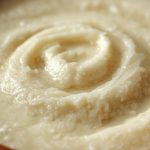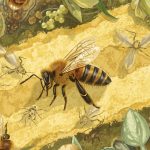Chocolate’s Secret Recipe: Microbes at Work
Fine flavour chocolate isn’t just the product of cocoa beans—it’s the result of a complex microbial dance that transforms bitter raw beans into a delicacy bursting with floral, fruity, and woody notes. Traditionally, this fermentation process is spontaneous and unpredictable, shaped by local microbes, temperature, and pH changes.
But now, researchers have shown that a defined microbial community—a carefully curated set of bacteria and fungi—can reproduce the same flavour signatures under controlled conditions
Cracking the Code of Chocolate Flavour
Cocoa fermentation has long been compared to winemaking or cheesemaking, but unlike those industries, farmers rarely add starter cultures. Instead, microbes from the environment take charge, leading to natural variations in taste between farms and regions.
The research team studied cocoa fermentations from Colombian farms and discovered that:
- Temperature and pH shifts inside the beans strongly tracked fermentation progress.
- Bacterial and fungal diversity changed predictably over time, with yeast families like Saccharomycetaceae and bacteria like Acetobacteraceae playing pivotal roles.
- These abiotic and biotic signatures correlated directly with chocolate flavour traits measured by a trained tasting panel.
Most importantly, genome-resolved metagenomics revealed redundant metabolic traits across the microbial community—meaning different microbes could perform similar flavour-producing functions. This redundancy makes it possible to design a smaller, yet functional, microbial consortium.
Building a “Microbial Starter” for Premium Chocolate
By combining the right microbes into a defined and metabolically competent consortium, the scientists recreated fine flavour attributes—traditionally linked to rare premium cocoas—under laboratory conditions.
The resulting chocolates were tested against reference samples from Madagascar (fine flavour) and West Africa (bulk cocoa). Remarkably, the defined community produced flavour notes closer to fine cocoa, with reduced bitterness and complex aromas.
This breakthrough suggests that fermentation starters for chocolate, much like those used in beer or sourdough, could ensure consistency and unlock premium quality at scale.
Why It Matters
- For farmers: Controlled fermentation could help smallholders consistently achieve higher bean quality, boosting income.
- For chocolate makers: Starter cultures could preserve terroir while ensuring reliability in premium batches.
- For consumers: Expect more accessible fine flavour chocolate without sacrificing authenticity.
- For science: The study offers a model for understanding how microbial interactions shape taste across other fermented foods.
Conclusion
This study shows that the flavour of fine chocolate is no longer just a gift of chance—it can be designed, reproduced, and scaled. By harnessing microbial consortia, the future of chocolate may be more sustainable, fairer for farmers, and even tastier for all of us.
The next time you enjoy a piece of dark, aromatic chocolate, remember: its richness doesn’t just come from cocoa—it comes from the microbes that bring it to life.
Reference
Gopaulchan, D., Moore, C., Ali, N., Sukha, D., Florez González, S. L., Herrera Rocha, F. E., … & Castrillo, G. (2025). A defined microbial community reproduces attributes of fine flavour chocolate fermentation. Nature Microbiology, 1-23. https://doi.org/10.1038/s41564-025-02077-6







